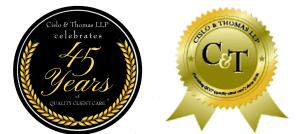On Tuesday December 2, the Supreme Court heard oral arguments in B&B Hardware, Inc. v. Hargis Industries, Inc., U.S., No. 13-352, weighing in on a 16-year-old trademark law dispute over phonetically identical names for two brands of screws. B&B Harware makes sealing fasteners and owns the registered mark “SEALTIGHT.” Hargis also manufactures sealing fasteners, and it used and sought to register the mark “SEALTITE.”
Under the Lanham Act, a person may neither register nor use a mark that would be “likely to cause confusion” with an existing mark. Here, while the TTAB held that Hargis’ mark created a likelihood of confusion with B&B’s mark, the district court found in favor of Hargis, and the US Court of Appeals for the Eighth Circuit affirmed the decision.
During the proceedings Tuesday, the Solicitor and Petitioner argued that a likelihood of confusion determination by the Trademark Trial and Appeal Board (TTAB) should preclude district court consideration of that issue in a subsequent trademark infringement trial. The court also considered whether, if a finding of likelihood of confusion does not trigger issue preclusion, the district court was bound by the TTAB’s finding.
In response to the Solicitor and Petitioner, Justice Sonia Sotomayor noted that that Patent and Trademark Office proceedings must be granted some weight in subsequent court cases in order to maintain the relevance of the administrative agency’s process. Sotomayor reiterated that in Bilski v. Kappos, “we explicitly said that some weight should be given to the Board’s judgment.”
In reply, representative for Hargis Neal Katyal noted that the court in Kappos also held that when there is “new evidence,” de novo review takes precedence, and that the TTAB’s inquiry in this case had far less evidence to consider than the District Court. Indeed, the District Court presided over a seven-day trial and the exchange of 4,000 pages of discovery.
Although the outcome in this case is still to be determined, the case will undoubtedly impact the issue of whether, in general, a finding of a likelihood of confusion precludes relitigating that issue in later infringement litigation.



